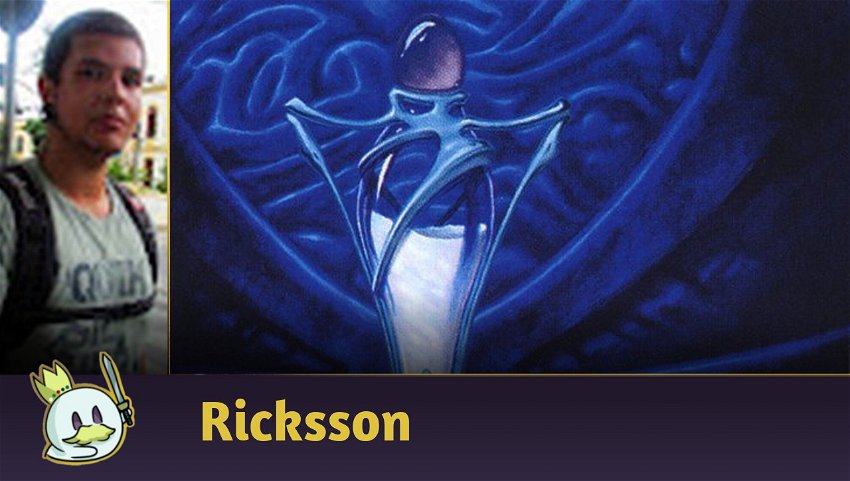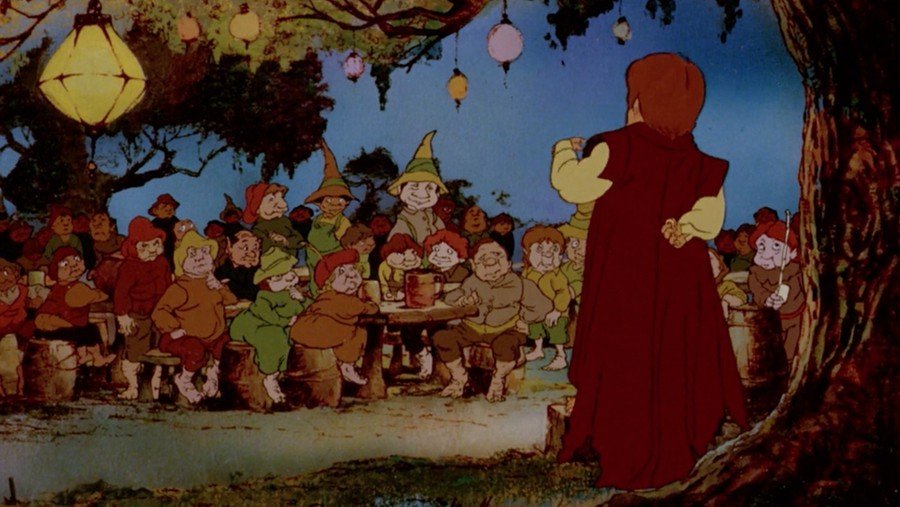About Mulligan
If it wasn't for the ability to Mulligan, certainly Magic: The Gathering's matches would go a lot differently. Who never raged about getting a landless hand, or a hand without short, mid and long-term interactions, or even a hand full of lands?
But before we talk about how to Mulligan properly... After all, what is Mulligan?
What is "Mulligan"?
The concept of Mulligan originated in the 1930s in golf, which was basically a proposal for when one of the players, when executing a simply tragic and horrible shot, could have the right to make a new shot.
In Magic, the Mulligan was incorporated for the purpose that when a player draws their starting hand and that hand is really bad, they are given the option to reshuffle their deck and draw a new hand. Yes, that's right, draw 7 cards again.
If it's the case that the new hand is still bad, it may happen that you need to mulligate more times, and when you find a hand with playable cards it finally stops.
In the most current Mulligan rule, also called the Vancouver Mulligan, after deciding to stop mulligans, the player must return a number of cards from his hand to the bottom of his deck according to the number of Mulligans made.
In summary, you will start the game with fewer cards depending on the number of mulligans. Therefore, the less you mulligan, the better, and one may ask: when should one mulligan? Let's understand what a bad hand is in Magic to understand when it is necessary to mulligan.
What is a good hand in Magic
In Magic, we can conclude that a good hand would have the following characteristics:
- A good ratio between lands and spells;
- Spells that allow you to interact at the beginning of the game;
- Spells that allow you to maintain your game strategy;
- Valor spells against the opponent's deck.
Good ratio between lands and spells
The correct ratio depends on deck to deck. A lower cost deck for each Spell might only need 1 or 2 lands, but decks with high cost Spells will need 2 to 4 lands in the starting hand.
The goal here is to be able to play with your deck. The most frustrating thing about a game is just watching your opponent play because you've only drawn lands or because there aren't enough lands to play your spells.
An example of a bad hand:

Spells that allow you to interact at the beginning of the game
Now imagine if you have the right number of lands and spells, but all your spells are to play at the end of the game? That is, they are high-cost spells. Is it worth it? Usually not, your opponent will take advantage of the first turns to get ahead, and you won't be able to keep up the pace.
An example of a bad hand:

Spells that allow you to maintain your game strategy
This is a mistake that many make. In front of you there is an aggro player and therefore, you think that the best way would be to keep a hand full of removals and completely forgets how to win the game. Remember, there has to be a plan to win, not just a plan not to lose.
An example of a bad hand:

Valor spells against opponent's deck
Another problem we can find is using completely useless cards against the opponent's deck. Why play removals against a Control deck that doesn't use creatures? This option is the most complex because it requires you to understand the metagame and which cards are likely to be in your opponent's deck.
Sometimes it might even be worth mulling to find that card that wins the game by itself, like for example, Rest in Peace against Dredge.
What is a bad hand in Magic
Logically, a bad hand is one that:
- Has too many lands or too many spells;
- Spells that only interact at the end of the game;
- Spells that don't pace your game;
- Spells that don't interact with the opponent's deck.
Mulliganing with Different Archetypes
Let's now analyze how the ideal Mulligan would be, using Magic: the Gathering's most known archetypes, to better understand what would be an ideal hand in different situations. We'll also discuss matches against different decks and what we look for in each of them.
Mulliganing with Aggro Decks
As the name already states, our strategy is focused on being aggressive, trying to end the match in the initial turns. So, you'll want in your initial hand some creatures, any useful spell or interaction and just the necessary lands for that early game; you'll probably not want a hand filled with lands.
Due to the aggressive strategy adopted by this deck, you won't want a hand with late game resources, that is, from turn 3 onward, as it goes against your game strategy. It is natural that, in any match with an aggressive deck, you'll try to play as fast as possible against your opponent.
Against the Archetypes
When you play against Control or Midrange decks, the big question will be your Mulligan post-sideboard because if your opponent has plenty of spot removals, global removals or counterspells, when starting the second game you might play slower regarding casting various creature spells, or alternating the order of spells you'll cast so that the most important one always resolves.
In cases with Burn decks, which will deal direct damage, it is possible to start with a slower hand (with more lands), so that at the right time in the match you can burn almost all of your opponent's health at once, particularly if they're tapped out.
In an Aggro mirror match, it is unavoidable that in the second game you will try to find a way of being even more aggressive, or at least a way of hitting them head on and keeping the game balanced.
In some cases, it might be necessary to change the deck's posture and strategy a bit, such as Burn decks with creatures, with which there are two ways of playing: by focusing on spells that only damage creatures or focusing on spells that only damage the player.
When you focus the target of your spells on your opponent's creatures, and they're also playing Aggro, you can approach it even a bit more "Control"-wise, gaining tempo and making them run out of resources.
Against Combo, you're usually racing against time, trying to win before they can do anything. Usually, if Combo doesn't take a control approach, just do what Aggro does best.
In case the Combo relies on some permanent on board, post-sideboard focus on having some spell that answers this permanent in your initial hand, when possible. If not, just race against them, really!
Ideally, you'll have in your initial hand at least two or three mana generators, and at least two or three possibilities for turn one and two possibilities for turn two.
I don't recommend you mulligan to less than 4 or 5 cards in hand even when you're unlucky, except, of course, if you're playing a deck that particularly relies on something in your initial hand to face the opponent's deck.
Mulliganing with Control Decks
When you're playing Control, naturally you'll play after an opponent's play most times, that is, answering their plays according to what they do, until the game reaches a point in which you can take most advantage of your resources. Be careful with the order of plays and playing the right answers for each situation, taking full advantage and full value out of your cards.
For instance, if your opponent casts some spell that is not (that) threatening to you, and you have some spell that annuls a target spell (such as a Counterspell) and a spell that will bring you some benefit (like a Brainstorm), there's no need for you to annul their spell, but you can answer them by casting something that will create an advantage to you or draw you more cards, interacting in another way or even by playing an instant spell when passing the turn.
Basically, the term "answer", that I've mentioned a few times, means the act of reacting or interacting with some opponent spell or permanent before they resolve it, or benefitting from this permanent, or doing something in your favor when your opponent tries to do something that may punish you.
That being so, you just need to have a number of lands in your hand that you're sure won't work against you and that simultaneously allows you to start your initial turns developing your game plan. Good initial answers will also be crucial for your deck to follow its strategy, gaining time to survive until mid/late game, which is when usually your deck will start to shine.
Usually, to keep in your initial hand, I recommend at least one or two ways of dealing with your opponent's spells, one or two ways of looking for resources in your deck (draw) and at least three mana generators. It isn't ideal to mulligan to less than 5 cards with Control decks.
Mulliganing with Midrange Decks
Midrange decks will depend a bit on the deck's own mechanics to really know how to mulligan with them, but it is unavoidable, just like Aggro, to make sure you have enough resources to use your mana in a sequence extracting the most out of your cards as possible, focusing on interactions that will generate you value throughout the game.
I affirm that usually it is an archetype which is a bit hard to play because it creates value more around mid-game, close to the 4th or 6th turn, depending on the development of the match in question and your hand.
Against the Archetypes
It might be a bit complicated to face Aggro decks because we tend to create more resources around mi-game, but Midrange decks use a few spells to focus on removing creatures, granting you time to breathe and allowing you to play mid-game onward, in which at some point Aggro decks start to lose speed, and we'll win in value alone.
Control decks are the hardest matchups due to the Midrange archetype's development being slower, just like control's, and everything a control deck wants is for you to play slowly.
A good strategy you can use is to "bluff" at certain points of the game: basically, you'll be focusing on using cards that will only bring you benefits or hinder your opponent's game more, making your opponent focus on annulling these spells or removing these permanents that have these effects, so that at the right time you can define the game after you've gotten information that they've used numerous answers, and therefore now have less resources to answer something relevant.
Against Combo decks, you need to approach it similarly to when you're playing against Aggro, but focusing on your opponent's key combo pieces. Many times this is only possible post-sideboard, when you include new answers in your deck.
In a Mirror match, facing the same archetype, it's always a race, but when we're talking about Midrange, the deck diversity is high. Based on that, in game 1 it is important to focus on a Mulligan that gets your deck to fulfill its strategy, so that then at game 2 you'll be able to have the same strategy or opt, with the sideboard, to look for some way of delaying your opponent.
Mulliganing with Combo Decks
When you're playing Combo, analyzing certain traits is crucial; "is it best to keep a hand with the combo practically done?", "do I keep some pieces or some possible answers to defend myself or some resource to help me find the combo's other pieces?", or "do I keep only the resources to find my combo?". The answer is: it depends a lot on how you prefer to play the match, besides the deck your opponent is playing.
Combo is always a risky proposition, as it isn't cool to focus only on aggression early on, only controlling everything or just creating value and not properly comboing: it is a very precise and subtle mix of each of the game styles.
When it comes to the Mulligan, Combo will always depend a lot on the deck. For instance, the Treasure Hunt, Zombie Infestation combo and some variations with Seismic Assault is a very simple combo, but very fun, and you can mulligan until you have one card in hand, this one being Treasure Hunt.
In other cases, though, you need more cards and resources in hand to move the game forward. It is always important to study well what each deck does, besides understanding how their combos work.
Against the Archetypes
I believe the matchup against Aggro will probably be the hardest, depending on which combo you'll use. If your strategy only has a few ways of defending yourself, Aggros will unfortunately try to run you over as quick as possible and then the race begins because if you know your opponent will play Aggro, there is a probability that they won't focus on dealing with what you'll do, and they'll just try and defeat you as soon as possible. In this type of match, you can opt for playing with a hand that speeds up your combo as much as possible, or keep a strategy that makes the enemy game plan a bit slower.
Against Control decks, you need to induce your opponent to remove or answer some spells that will hinder your combo because they want the game to drag on because they want to control the match. If you try to combo too quickly, they'll probably have more answers to prevent you, so as a result, you need to let them spend their resources distracting your focus; so, there isn't much trouble starting with a slower hand when it comes to combo speed.
So, ideally, at this time, in case you don't have the conditions to combo very fast, you may play passively to distract them, as some time or another your opponent will want to create value on board, and you can counter-attack.
The Mirror Match is always a race regardless of the archetype, but Combo decks mirrors tend to be more frenetic than an Aggro mirror, for instance. You must analyze your opponent's deck and their posture to define if you'll keep focusing on comboing or if you'll stall the match a bit, but it is always important to have a playable hand, with the necessary lands and spells according to what you seek (be it creatures, pieces to look for your combo, or the combo pieces themselves).
Final Thoughts
We can notice there isn't a pattern of specific cards in your initial hand to follow which will define whether your hand is or not perfect, we can only avoid having a very bad hand to the point you're certain you'll lose, but it will always depend on the situation you're facing in the match in question: there are hands which are better or worse depending on the opponent you're facing.
The more matches you play and the more experience you have, the better will be your analysis ability to simulate a good strategy at this initial game moment.
I hope you've liked the content and see you next time!














— Comments 0
, Reactions 1
Be the first to comment